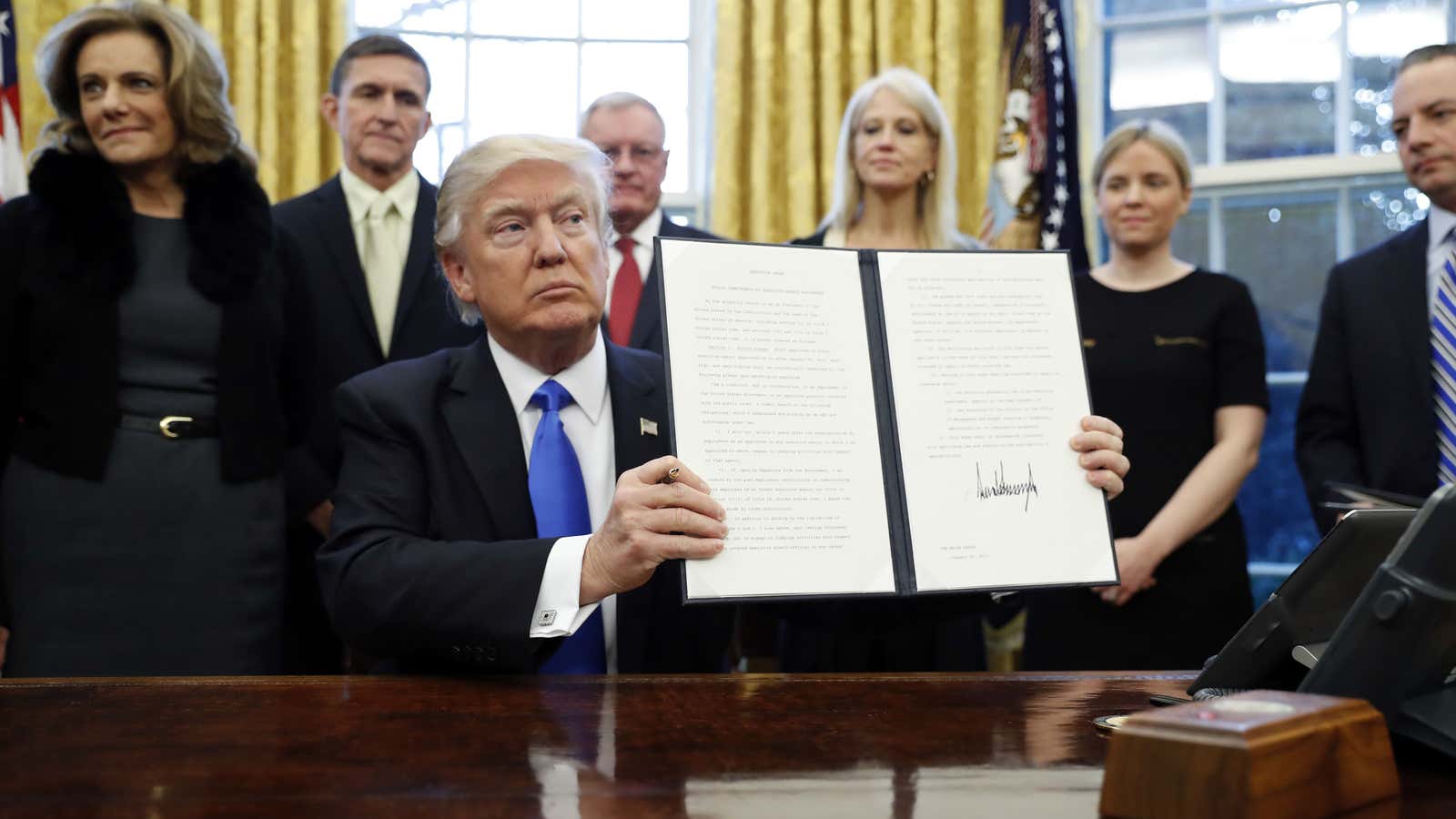

On Monday (Jan. 30), Sally Yates was fired from her position as acting US attorney general almost immediately after instructing the justice department not to defend president Donald Trump’s new immigration policies in court. Yates said she was not convinced that defending the executive order that establishes those policies was consistent with her responsibility to stand for what is right, nor was she was she convinced that the order was lawful.
Yates is not alone in challenging Trump’s immigration order, which indefinitely blocks Syrian refugees from entering the US, blocks refugees from all other nations for four months, and places a 90-day ban on entry to the country from seven Muslim-majority nations (read the full text here ). After Trump signed the order on Jan. 27, protests erupted at major US airports, business executives condemned the order , and the American Civil Liberties Union challenged it with a lawsuit.
AdvertisementCan an executive order be revoked? There are three ways—but none of them commonly occur, at least not while the president who issues the orders is still in office.
Despite the historical infrequency of executive orders being revoked within the same presidential term as they are issued, Trump’s immigration order has already changed. The US Department of Homeland Security issued an order on January 29 essentially exempting legal permanent US residents from the ban . Though agencies sometimes clarify their interpretation of an executive order, Howell says the DHS action was fairly unusual. “In the aftermath of most executive orders, if not silence, there is at least broad acquiesensce,” he says “Presidents usually vet them, they talk to key political actors, get their input … The subjects that would require clarification, whoever writes the order is usually aware of them and provides clarity in order.”
On January 28, a federal judge also issued an emergency stay against the executive order in response to the ACLU lawsuit, which was brought on behalf of two Iraqi men detained at JFK International Airport in New York. The ruling temporarily prevented the government from deporting some people who had already arrived at airports in the US.
While checks on executive orders may not be used frequently, they do place limits on presidential power, Howell says. “A president, in principle, could write whatever they want in an executive order, but it would be wrong to conclude that president can remake the political universe in his image,” he asserts. “There are meaningful institutional checks that apply.”
Our free, fast, and fun briefing on the global economy, delivered every weekday morning.